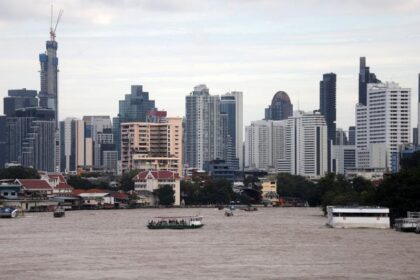Japan’s Foreign Workers on Track for Historic Overseas Remittance Record
Foreign nationals living and working in Japan are poised to send a record-breaking amount of money back to their home countries in 2025, with remittances expected to surpass 1 trillion yen (approximately $6.8 billion) for the first time. This milestone reflects not only the growing presence of foreign workers in Japan but also the increasingly vital role they play in both the Japanese economy and the livelihoods of families across Asia and beyond.
- Japan’s Foreign Workers on Track for Historic Overseas Remittance Record
- Why Are Remittances from Japan Surging?
- Japan’s Evolving Immigration and Labor Policy
- The Global Impact: Remittances as a Lifeline
- Challenges: Informal Channels, Worker Protection, and Social Impact
- Comparing Japan’s Remittance Flows to Other Countries
- What Lies Ahead: Policy, Integration, and Sustainable Migration
- In Summary
Over the past decade, the amount of money remitted by foreign workers in Japan has more than doubled. This surge is driven by a combination of factors: a rapidly expanding foreign workforce, a weakening yen that makes remittances more valuable in recipients’ local currencies, and persistent labor shortages in Japan’s aging society. As Japan’s foreign worker population continues to rise, the impact of their remittances is being felt both domestically and internationally.
Why Are Remittances from Japan Surging?
Remittances—money sent by workers to their families in their home countries—are a lifeline for millions of households worldwide. In Japan, the growth in remittances is closely tied to demographic and economic trends. Japan’s working-age population peaked in 1990 and has been shrinking ever since, creating acute labor shortages in sectors ranging from manufacturing and construction to healthcare and hospitality. To fill these gaps, Japan has increasingly turned to foreign workers.
According to recent data, there are now a record 2.3 million foreign workers in Japan, up from just 700,000 a decade ago. These workers hail from countries such as Vietnam, China, the Philippines, Bangladesh, Sri Lanka, and Indonesia. Many come to Japan on temporary work visas or through technical intern programs, sending a significant portion of their earnings home to support their families.
The weakening of the Japanese yen has also played a role. As the yen loses value against other currencies, the money sent home by foreign workers is worth more in local terms, making remittances even more attractive and impactful for recipient families.
Japan’s Evolving Immigration and Labor Policy
Japan has long been known for its restrictive approach to immigration, but economic necessity is prompting gradual change. Historically, Japan’s immigration system offered limited pathways for foreign workers to settle permanently. Most migrants held temporary visas with strict renewal conditions, and access to citizenship was rare.
However, recent years have seen significant policy shifts. In 2017, Japan introduced fast-track permanent residency for skilled workers. In 2018, new laws expanded blue-collar work visas and provided a path to permanent residency for those who wish to stay. These changes mark a move away from the traditional “guest worker” model toward a more inclusive approach, though many restrictions remain.
Despite these reforms, Japan’s immigration system remains complex and hierarchical, with multiple visa categories and varying rights for different groups. Most foreign workers are still on temporary contracts, and social integration remains a challenge. Nevertheless, the steady increase in foreign workers—and the remittances they send—signals a shift in Japan’s approach to labor and migration.
Foreign Workers: Essential to Japan’s Economy
Foreign workers are now indispensable in sectors that struggle to attract Japanese employees. Factories, construction sites, hospitals, restaurants, and hotels across the country rely on migrant labor to keep operations running. Research suggests that Japan will need as many as 4.19 million migrant workers by 2030 to sustain economic growth, yet a shortfall is expected unless migration pathways are further expanded.
Globally, labor shortages cost major economies an estimated $1.3 trillion in lost GDP each year. In Japan, the aging population and declining birthrate make foreign workers a crucial part of the solution. Migrants not only fill labor gaps but also bring new skills, perspectives, and innovation to Japanese society.
The Global Impact: Remittances as a Lifeline
Remittances are not just a Japanese phenomenon—they are a global force for development. According to the World Bank, migrant workers worldwide sent $905 billion in remittances in 2023, far exceeding the total value of foreign direct investment and development aid. These funds are a lifeline for families in low- and middle-income countries, supporting education, healthcare, and poverty reduction.
For countries like the Philippines, Bangladesh, Sri Lanka, and Indonesia, remittances from workers in Japan and other wealthy nations are a major source of foreign exchange and economic stability. In the Philippines, for example, remittances accounted for 8.9% of GDP in 2022, with overseas workers sending home $33.5 billion. In Bangladesh, remittance earnings reached over $30 billion in the 2024–25 fiscal year, a 24% increase from the previous year. Sri Lanka and Indonesia have also seen significant growth in remittance inflows, helping to bolster their economies amid global uncertainty.
Regional Trends: Asia’s Migration and Remittance Boom
Japan is part of a broader regional trend in Asia, where labor migration and remittances are on the rise. Countries like Bangladesh and Sri Lanka are shifting their focus from low-wage, unskilled labor markets in the Middle East to higher-paying, skilled jobs in Japan, South Korea, and Europe. Governments are investing in language and skills training to prepare workers for these opportunities, recognizing the economic benefits of skilled migration.
For example, Bangladesh has signed agreements with Japan to send 100,000 workers over the next five years, while Sri Lanka is seeing more of its citizens seek employment in East Asian countries. These shifts reflect both the changing demands of destination countries and the aspirations of migrant workers seeking better wages and working conditions.
Challenges: Informal Channels, Worker Protection, and Social Impact
While the growth in remittances is a positive development, it also brings challenges. One concern is the use of unapproved or informal money transfer services, which operate outside government oversight. Authorities worry that these channels can facilitate money laundering, tax evasion, and exploitation of vulnerable workers. The Japanese government is responding by tightening regulations and encouraging the use of approved remittance services to ensure transparency and security.
Another challenge is the protection of migrant workers’ rights. Many foreign workers in Japan and elsewhere face precarious working conditions, limited legal protections, and barriers to social integration. Organizations like the International Organization for Migration (IOM) are working with governments and the private sector to promote fair treatment, provide resources and training, and support social integration initiatives such as health handbooks for migrants.
The Human Side: Families, Sacrifice, and Emotional Costs
Behind the statistics are millions of personal stories. For many migrant workers, the decision to leave home is driven by the need to support their families. The money they send home pays for food, education, healthcare, and housing. But the financial benefits come at a cost: separation from loved ones, missed milestones, and emotional strain.
As one analysis of the Philippines’ remittance economy notes, “Remittances may buy a modicum of happiness, but do not lessen the attendant emotional pain.” Many migrants, especially women working as nannies or caregivers, are unable to raise their own children while caring for others abroad. The psychological impact on both migrants and their families is significant, highlighting the need for better support systems and opportunities for family reunification.
Comparing Japan’s Remittance Flows to Other Countries
Japan’s projected remittance record is impressive, but it is part of a larger global pattern. Other major labor-exporting countries are also seeing record inflows:
- Pakistan: Received $3.21 billion in remittances in July 2025 alone, with annual totals expected to remain high as over 2 million Pakistanis work abroad, mainly in the Gulf, Europe, and East Asia.
- Indonesia: Indonesian migrant workers sent home Rp253.3 trillion ($16.5 billion) in 2024, with projections for further growth as more workers are placed overseas.
- Sri Lanka: Remittances reached $3.73 billion in the first half of 2025, with a growing number of workers seeking jobs in Japan and South Korea.
- Philippines: Remittances rose by 3.5% in November 2024, totaling $34.61 billion from January to November, with Japan among the top five source countries.
These figures underscore the importance of remittances not just for individual families, but for national economies and global development.
What Lies Ahead: Policy, Integration, and Sustainable Migration
Japan’s experience with foreign workers and remittances offers lessons for other countries facing similar demographic and economic challenges. As labor shortages intensify, the need for well-managed, humane migration systems becomes ever more urgent. Policymakers must balance economic needs with social integration, worker protection, and the rights of migrants.
Experts argue that a holistic approach to migration—one that supports both origin and destination countries—can drive sustainable development and shared prosperity. This includes investing in skills training, reducing the cost of remittances, ensuring fair treatment for workers, and creating pathways for permanent settlement and family reunification.
As Japan continues to adapt its immigration policies and labor market strategies, the experiences of its foreign workers—and the families who depend on their remittances—will shape the country’s future. The record-breaking remittance flows of 2025 are a testament to the resilience, ambition, and sacrifice of millions of migrants, and a reminder of the interconnectedness of our global economy.
In Summary
- Japan’s foreign workers are set to remit over 1 trillion yen ($6.8 billion) in 2025, a historic record reflecting a decade of rapid growth.
- The surge is driven by a growing foreign workforce, labor shortages in Japan, and a weaker yen making remittances more valuable.
- Remittances are a crucial lifeline for families in countries like the Philippines, Bangladesh, Sri Lanka, and Indonesia, supporting education, healthcare, and economic stability.
- Japan’s evolving immigration policies are gradually opening more pathways for foreign workers, though challenges remain in worker protection and social integration.
- Informal money transfer channels and the emotional costs of migration are ongoing concerns that require policy attention and support.
- Japan’s experience highlights the global significance of remittances and the need for sustainable, well-managed migration systems to benefit both migrants and host societies.












